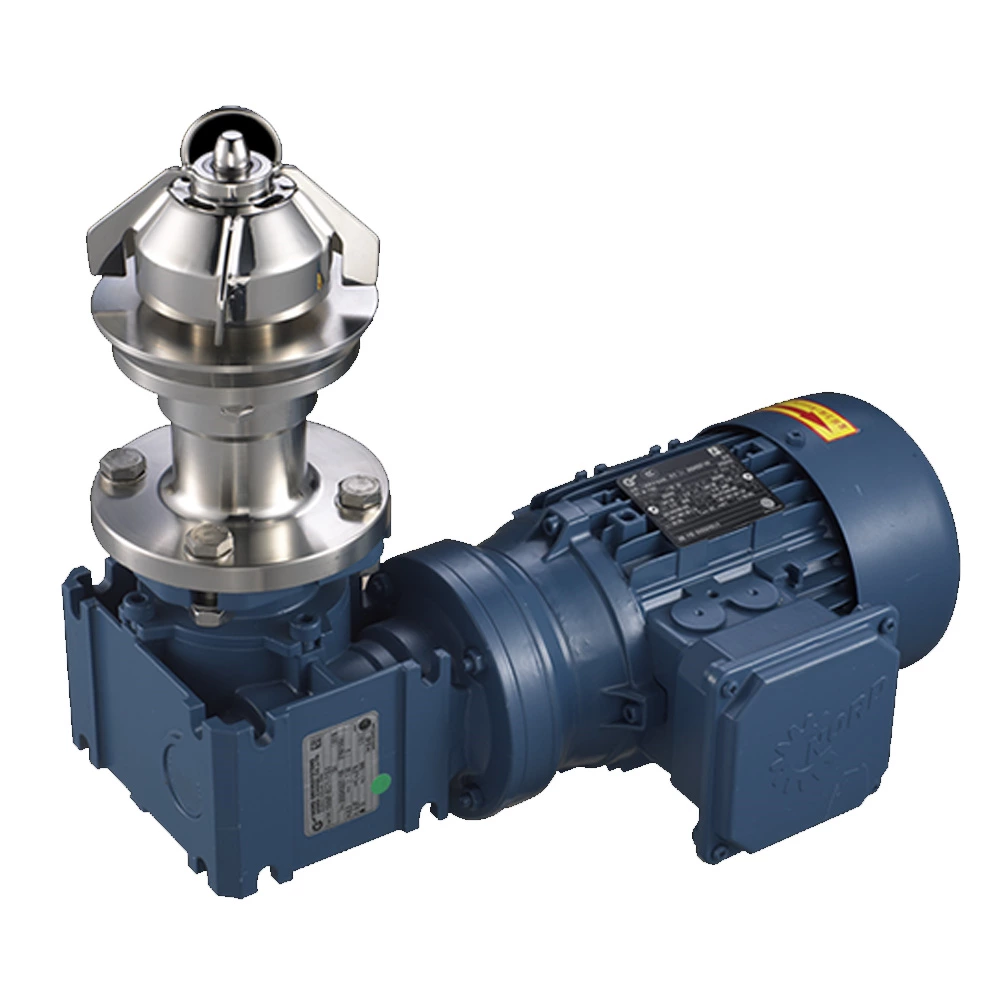Stainless Steel Vacuum Emulsification Tank Product Introduction
The stainless steel vacuum emulsification tank is a fully sealed, vertical structured hygienic container equipment. It uses the high-speed rotating shearing wheel and the shearing stationary wheel of the high-shear emulsifier to fully and quickly mix, disperse, emulsify and homogenize the mixed liquid and the mixture in the tank. It is widely used in food (dairy), beverages, bioengineering, pharmaceuticals, fine chemicals, pigments and other industries, which greatly improves production efficiency and material quality, especially for CMC, glue, powder and other additives that are difficult to dissolve. The equipment structure can adopt single-layer, heat-insulating, jacketed (heating, cooling) and other large vacuum emulsification tanks according to process requirements. Application Overview This series is a fully sealed, vertical structured hygienic container equipment. It uses the high-speed rotating shearing wheel and the shearing stationary wheel of the high-shear emulsifier to fully and quickly mix, disperse, emulsify and homogenize the mixed liquid and the mixture in the tank. It is widely used in food (dairy), beverage, bioengineering, pharmaceutical, fine chemical, pigment and other industries, which greatly improves production efficiency and material quality, especially for CMC, glue, powder and other additives that are difficult to dissolve. The equipment structure can adopt a variety of structural forms such as single layer, with insulation, with jacket (heating, cooling) according to the process requirements.
Emulsion Tank means emulsification, mixing, blending, homogenization, etc. The stainless steel emulsification tank can be standardized and humanized according to the design structure and configuration of the production process requirements. The emulsification tank can realize feed control, discharge control, emulsification control and other manual and automatic controls during the emulsification process. The structure of the emulsification tank The emulsification tank consists of an emulsification tank body, an emulsification tank cover, an emulsifier, a support, a transmission device shaft seal device, etc., and a heating device or a cooling device can be configured according to the process requirements.
Features of material homogenization and mixing:
The process of three coaxial stirring mixers is adopted, which is stable and suitable for homogenization and emulsification, making the material processing very delicate and the particles very small. The quality of emulsification depends on how the particles are dispersed in the preparation stage. The smaller the particles, the weaker the tendency to gather on the surface, and thus the less chance of emulsification being destroyed. The XJR series emulsifier adopts a unique stator-rotor structure to produce cutting, compression, folding turbulence and other effects through high-speed operation, so that the material flows to the high shear homogenization emulsifier, and at the same time, the product is assisted by the mixing action of the reverse blades, so that the fineness of the product reaches a very high level. This series is equipped with a vacuum system, and the homogenizer can obtain high-quality emulsification and mixing effects under vacuum processing conditions.
Maintenance specifications are as follows:
1. Clean the area around the emulsification tank at any time. There should be no sewage or materials on the ground on the floor. The waste caused by the production process should be concentrated and quickly processed.
2. Check whether the machine connection hardware is loose and adjust it to tighten it.
3. Check the stirring paddle, scraper, homogenizing filter components and adjust and tighten them.
4. Check whether the water and oil circuits are leaking and tighten them if necessary.
5. Check whether the heating tube and thermometer are in good condition and tighten the wire terminals.
6. Add lubricating oil and heat transfer oil periodically.
7. Check, clean and maintain the motor and deceleration and add deceleration oil.
8. Arrange the circuit and electrical control box and clean and maintain the electrical components in the electrical box.
9. Test the insulation between the circuit and the motor to the ground.
10. Keep records of each equipment maintenance.









